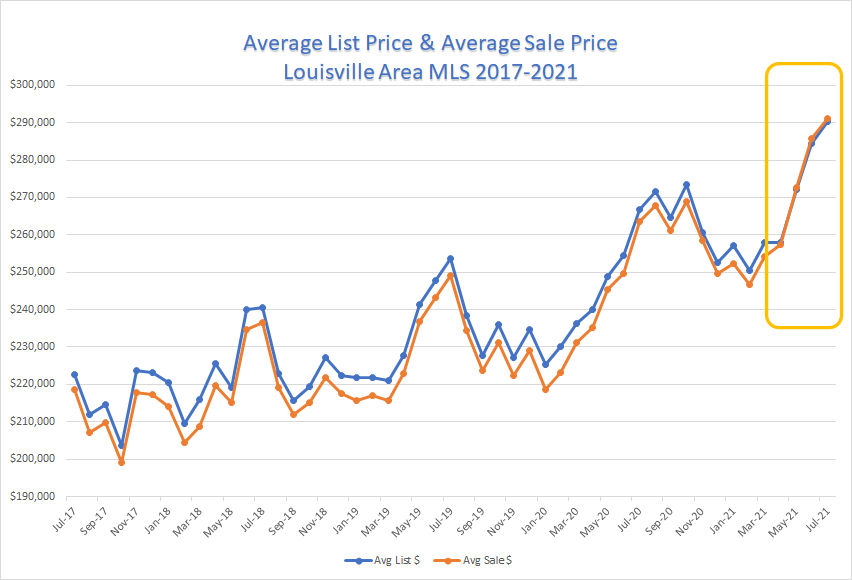The Upside Down Summer 2021 Louisville Housing Market
The Impact of Inventory Shortages - More Money Chasing Less Product

Appraisers like predictable patterns; it’s just the nature of our jobs. We like residential houses to be listed for 30 days and then go under contract at 95% of list price and close on day 90; we like office buildings to sell for an 8% capitalization rate and Chick-Fil-A to buy all of their land at $22.96 per square foot (that works out to an even million per acre). However, the summer of 2021 has thrown a wrench in our orderly Midwest residential housing market.
Obviously, COVID is the answer for all known problems and market anomalies and will be used as such for the next 8-10 years. However, sarcasm aside, COVID is actually the reason why we have a housing shortage, at least in Louisville.
First, during COVID, material shortages in the global supply chain were significantly interrupted. Wood, metal and concrete costs have skyrocketed, although they are starting to come back down now. So, what does that do to pricing on new homes? Should the elevated cost due to material price spikes really be included in the market value? Is it possible that a home that costs $300,000 to build (including the land value) worth $250,000 the day it’s finished? The builder says it’s $325,000, the appraiser says $250,000 due to the best comps out there.
Secondly, Louisville barely had enough housing to meet demand pre-COVID. From July 2017 through February 2020, our market had 2.14 to 3.85 months of inventory. That means that at any given time, if there are 100 buyers total in the market, there was 214 to 385 houses to choose from. That’s not exactly a stable market. In fact, I was taught back in the early 2000’s that a stable Midwest town should have 4 to 6 months of inventory at any given time. Now, I will admit that due to the shortened time from contract to closing compared to two decades ago, the market just moves a bit faster. So, let’s pretend that 2.14 to 3.85 months is considered the “new” stable.
When we look at March 2020 through July 2021, inventory dropped to 0.74 months to 2.36 months. The high mark of 2.36 months was in April 2020 at the height of the pandemic onslaught, but then quickly dropped to about 1.5 months of inventory from May 2020 through February 2021. Then, we saw inventory levels below 1 month from March 2021 through June 2021, where it hovered between 0.74 to 0.94 months. That means if there are 100 buyers total in the market, there are only 74 to 94 homes to choose from. As of July 2021, we are at 1.01 months.
Obviously, this has created a true seller’s market where offer prices are now almost always over list price with escalation clauses, multiple offers are expected, appraisal and inspection waivers, quick closings, etc… For an appraiser, this is a extremely challenging because if a house is listed for $200,000 and then sells for $250,000, what exactly is the market value?
The problem arises because market value is the most probable price a property should achieve at a specified date between buyers and sellers with typical motivations and neither is under duress. So, if there is a shortage of inventory, and you need to get into a house to get your kids registered for school in the fall, aren’t you under duress? If you offer $20,000 over list price with an escalation clause because you’ve lost the last 5 houses you’ve put in contracts on, is that really market value? Then, we I appraise the house next door next month, was the “price” of $250,000 really the value? Should I use that for a comparable or adjust the contract price down to a lower market value because of market conditions?
The chart at the top of this page shows that for the first time in recent history, average sale prices have exceeded average list prices. That means on average, homes are selling for more than list price, which is a significant market reaction to more money chasing less homes. It’s a sound economic principle that if more money chases the same amount of product, prices increase.
Our firm appraises residential and commercial properties in the Louisville, Kentucky area including southern Indiana.